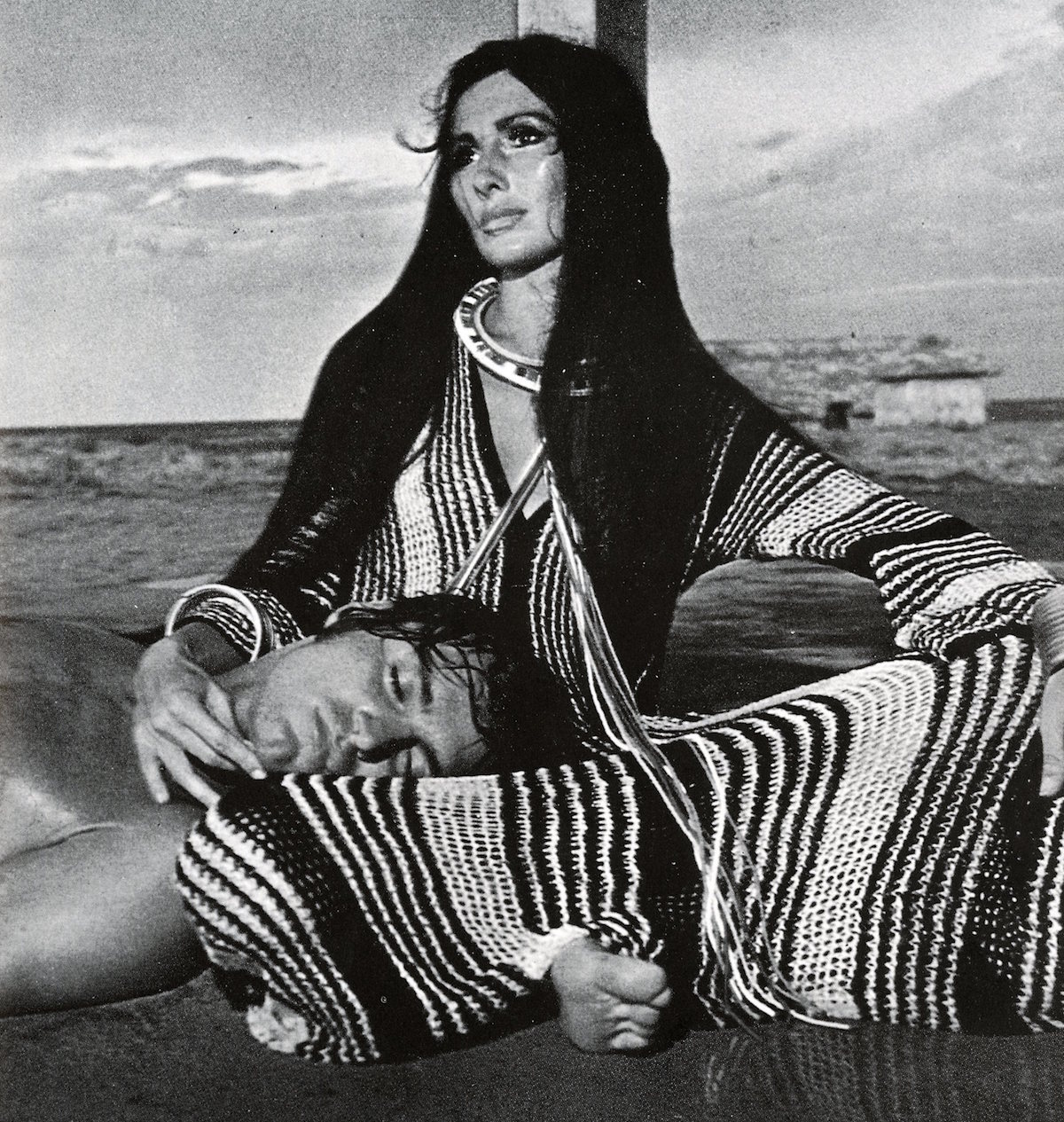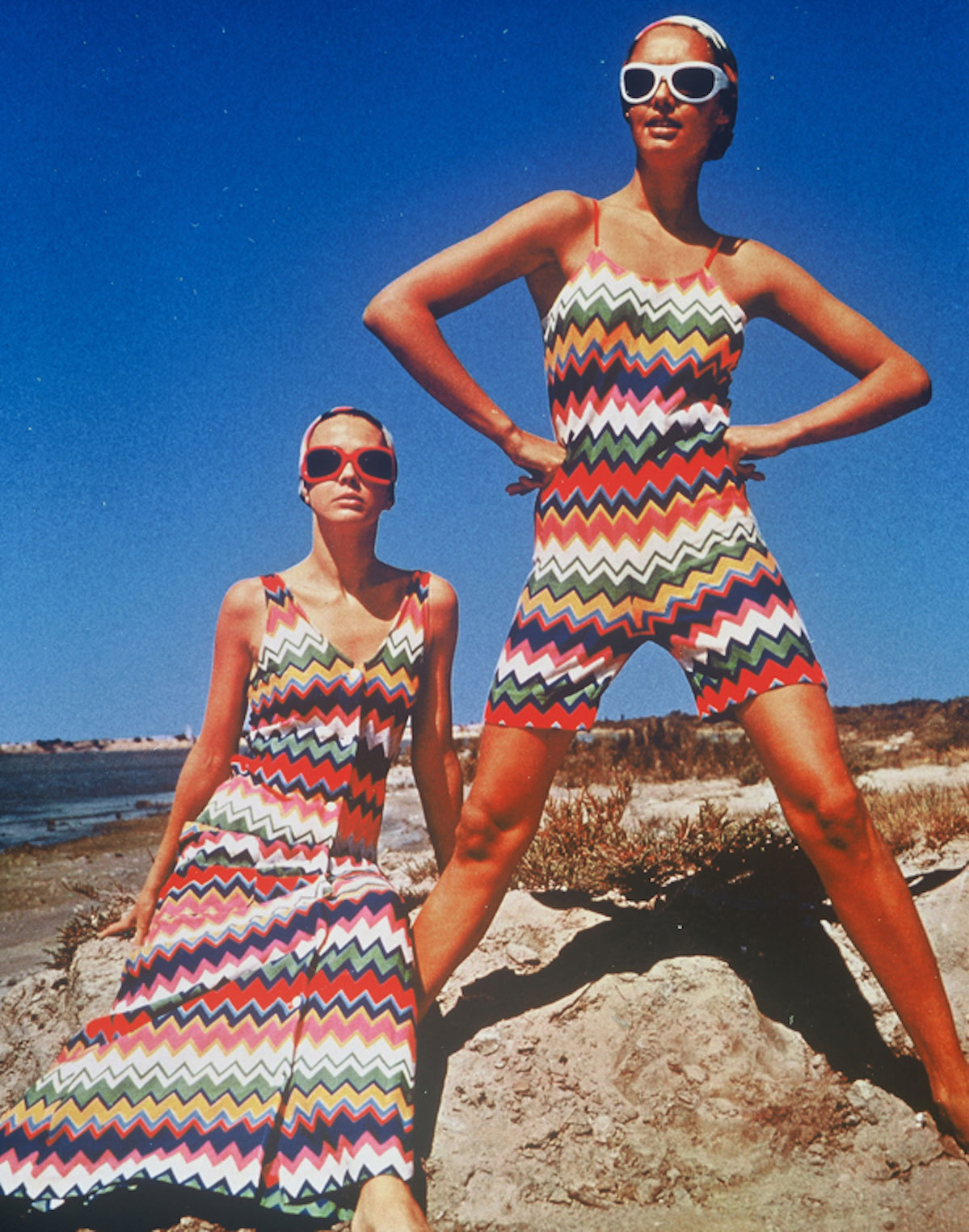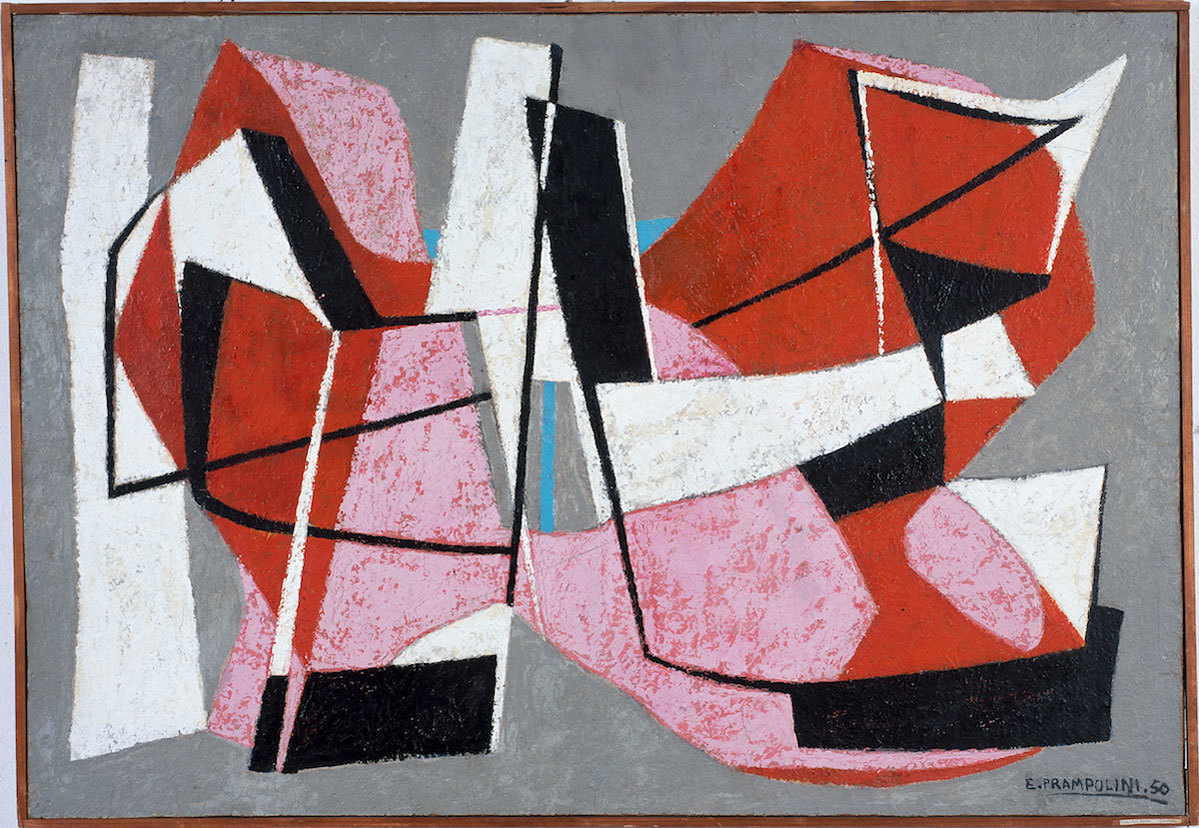It was inevitable that the Missoni Art Color show would eventually make it’s way to London. Taking place at Bermondsey’s Fashion and Textile Museum following an opening at the Maga museum in Gallarate, Italy last year, it was here, during the 1948 Olympics, that a 16-year-old English-language student named Rosita Jelmini first met the handsome track and field athlete she’d not only marry, but form a partnership with that would an leave an indelible zig-zag across knitwear until his death in 2013. With Ottavio “Tai” Missoni, the eponymous Missoni brand became known for its distinctive use of color and pattern; from the athleisure-prefiguring tracksuits designed for Tai’s Olympic teammates, to the brand’s Diana Vreeland championed 70s heyday (“Who says a rainbow has seven colors? There are tones!” the Vogue Editor-in-Chief reportedly commented on first seeing the space-dyed designs).
Not that fashion is the reason for the exhibition. Enter the opening room and the first thing that hits you is the sheer absence of clothes (and not in the proto-nipple-freeing way that saw Missoni temporarily excluded from the Pitti fair following a wardrobe malfunction in 1967). Instead, the show places the family’s work — helmed, since 1996, by children Luca and Angela — within the context of the twentieth-century European art; works by Sonia Delauny, Giacomo Balla, and Gino Severini, as well as Tai Missoni’s own, establishing an expressive language that would later be reworked through the Missoni creative process. It’s a clever move. When the clothes do appear — forty-two key looks from an archive that stretches from 1953 to the present day — the shapes, lines and zig-zags that define the Italian brand’s strict aesthetic appear part of a larger dialogue that began with the avant-garde and ended up in fashion editorials the world over.
“I would like to describe visually the fascination of a creative process that leads to the physical transformation of material,” says Luca Missoni, who has lead the curation of the project. “It is the mystique of color taking shape. There is experimentation, the repetitive. As the show opens to the public, we were lucky enough to sit down with founder and family matriarch, Rosita Missoni, to discuss the creative process behind one of Italy’s best-loved ready-to-wear brands.

How does it feel to look back over your work in this way?
I’m very proud. My husband was a fantastic colorist. I grew up in a family of loungewear manufacturers, but we had embroidery machines and a section where all the yarns used for embroideries were dyed in the factory. In the 20s, my grandparents were making huge shawls with big roses and for the fringes they were using space dyed colors. Many, many years after I said, “Can I have some of the hanks?” — because every color was kept in their archive as a document — and they said, “Okay!” So I knitted with a yarn that was dyed in the ’20s and made the first space dyed sweater. This is something that makes me really proud, because it was adding this additional effect to stripes and color. Now everybody does it but when I did it at the end of the 60s, I was absolutely surprised. Every sweater was different to the other.
Can you remember when you first became aware of fashion in a wider sense?
In my parents’ factory there were fashion magazines from all the world, which I kept cutting out, even when I was a child. So I had a panorama of fashion of the ’30s which was the period I liked most. I had it just in my head. As soon as I could, I tried to follow that idea of a fashion which is simple, but actual and where color was the element. We started making stripes because that was the easiest way to put color on clothes.

How were those first initial designs received?
We had our first success in 1958 with a production we made for the Milan department store la Rinascente. It was the first dress that they sold without needing to go into a changing room to try on, because they were fully buttoned down the front, one jewel neck and the other shirt neck. They made a full window with eighteen of these dresses and the buyer called me and said, “You have to come and see! There’s a full window of your dresses in Piazza del Duomo!” So we went there at eight o’clock at night, a foggy March, nobody around in the whole square. We’re standing there and the window displayer, to add a touch of color, had placed handkerchiefs in one of the styles across the faces of the mannequins so that it looked like they were playing blind man’s buff. And a worker goes by and he stops in front of the window and he says, “Oh, poor girls. Thank God they made them blind because if they could have seen each other!” This was the first comment of a passerby!
Is there one thing in particular that jumps out when you look back through the exhibition?
Fashion is the world in which we became famous but what I’m very proud of is that we codified a style with colors and textures. As you can see from the forty-two outfits that we put together, they all look very contemporary but some are from the end of the ’50s, the ’60s. They could all be worn now and this is what makes me proud. To have created this style.

Missoni Art Color is on from May 6 – September 4, 2016.
Credits
Text Matthew Whitehouse
Images via Missoni
